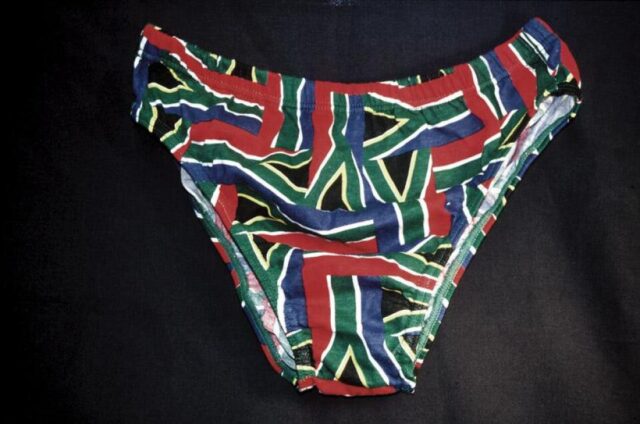How often do you wear a pair of underwear? If you own a week’s worth, that’s 52 wears per year.
HOW often do you wear a pair of underwear? If you own a week’s worth, that’s 52 wears per year.
Yet you probably spend less on these basic staples than fun impulse purchases or fancier clothes that you use way less.
The result: Your closet essentials wear out and land in the trash well before the items you never really wear, contributing to the millions of tons of landfilled or burned clothing in the United States.
But what if you allocated more of your budget to the things you wear the most often, investing in higher-quality items that last longer? This is the logic of price per wear, or the idea of calculating how much your clothing costs based on the amount you wear it.
It’s an approach fashion and psychology experts say could transform your relationship to your wardrobe, making you less likely to splurge on spur-of-the-moment purchases or one-off desires. When you buy less, you also send a signal to the fashion industry that you want clothes to last longer and that you’re willing to pay more for them.
“This can lead to a more intentional and satisfying shopping experience, where purchases are based on genuine need and long-term utility rather than impulse or status,” said Jay Yoo, a researcher on consumer behavior and fashion at Baylor University.
How many outfits do you need, really?
The average American buys more than one new piece of clothing per week. If that matches your shopping habits, in a span of five years you have purchased more than 320 pieces of clothing. Assuming you wear only three or four items at a time, that’s 80 to 100 different outfits.
This way of shopping for clothes encourages the apparel industry to keep churning out more cheaply made items. Over the last 15 years, clothing production has roughly doubled globally, while the number of times we wear each piece of clothing has declined by about 40 percent over the same time.
The industry creates between 8 and 10 percent of the world’s greenhouse gas emissions and somewhere around 4 percent of our total solid waste in the United States.
Though some in the fashion industry are focusing on more durable, less polluting products – take the ongoing effort to remake jeans, for example – the consumer mind-set also needs to shift, said Devon Rule, the co-founder of Indyx, an app that helps you figure out how to make the most of what’s already in your closet.
How to calculate your clothes’ price per wear
The equation is simple. Take the price tag of a piece of clothing you want to buy and divide it by the times you think you might wear it before it falls apart or you get sick of it.
Say you purchase a $50 sweater that lasts 10 wears before it develops a hole or seriously pills. The price per wear for that sweater is $5. Now imagine you purchase a $100 sweater made of more durable materials. You wear it 30 times before you decide you dislike it or it starts to fray. The price per wear is $3.30.
“Higher quality often contributes to a longer life span, so the cost per wear really decreases over time,” said Katrina Caspelich, the chief marketing officer for Remake, a nonprofit that advocates for sustainable and ethical fashion. “It’s actually more expensive to buy something cheaply made in the long run. And a lot of time, money and energy are wasted when you are continuously having to replace items that are falling apart just after a few wears.”
Given the way clothes are marketed – with hype around trends and fancier apparel – it’s not surprising shoppers may not want to spend too much on socks. “Socks are typically hidden beneath pants or shoes, making them less visible and potentially less appreciated,” Yoo said.
There’s little status associated with wearing them, and everyone owns similar versions of the same items. But the items you wear every day are valuable for precisely that reason – you need to have them.
Getting into the price-per-wear mind-set
You might feel that spending more money on fewer and more practical items will take the joy out of shopping. But experts say the opposite is often true.
“If you buy less and you’re thinking more about each purchase, those purchases automatically become more valuable to you than something you bought offhand impulse,” Rule said.
Calculating your wardrobe’s price per wear can make you feel more connected to it and more secure about it.
Say you feel a desperate compulsion to buy a pair of mesh ballet flats because they’re the “hottest shoe of the spring.” If you drop $145 and wear them once every two weeks until the “hottest shoe of the summer” comes along, that’s $18 per wear.
Now imagine you spent that same amount on the sneakers you’re going to wear most days for the next six months. That’s less than $1 per wear. You’ve not only saved money, but you’ve bought a pair of shoes that will match with most of what you own and that you’ll depend on in your day-to-day life, said Rule.
You also avoid becoming frustrated and desperate for the next thing when you realize that no one is wearing those mesh shoes anywhere.
If you can resist the urge of fast fashion trends, you’re left with money to spend on clothing that’s satisfying in a different way: 100 percent wool socks with fun patterns and a lifetime guarantee. Beautiful underwear that feels good against the skin. A white T-shirt that costs $45 – or even $90.
If you’ve done your research, those splurges should last for longer and feel more meaningful than anything you buy on a whim.
PERSONAL FINANCE








